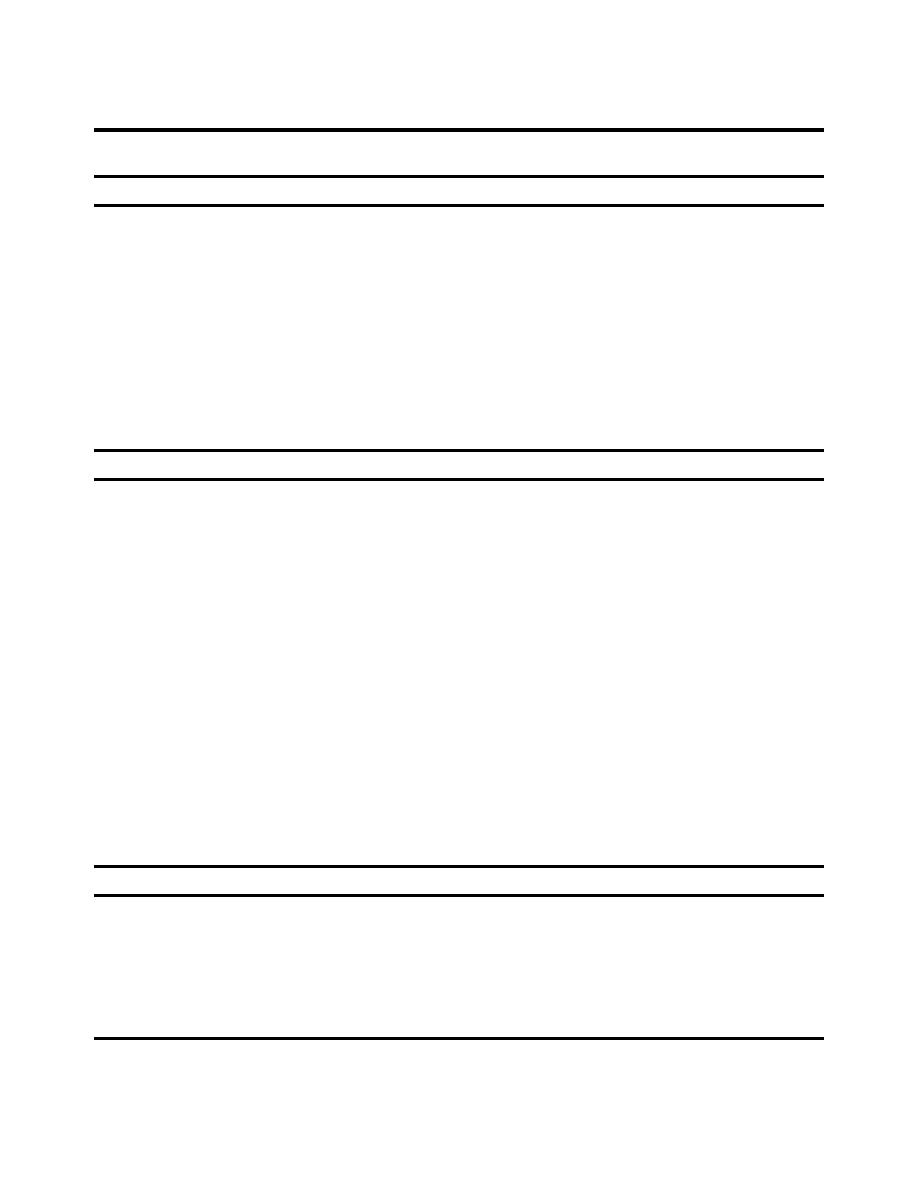
EI 02C097
01 Jul 97
Table 1-5
Drilled Shaft Applications, Advantages, and Disadvantages
Applications
Support of high column loads with shaft tips socketed in hard bedrock.
Support of moderate column loads with underreams seated on dense sand and gravel.
Support of light structures on friction shafts in firm, nonexpansive, cohesive soil.
Support of slopes with stability problems.
Resists uplift thrust from heave of expansive soil, downdrag forces from settling soil, and pullout forces.
Provides anchorage to lateral overturning forces.
Rigid limitations on allowable structural deformations.
Significant lateral variations in soils.
Advantages
Personnel, equipment, and materials for construction usually readily available; rapid construction due to mobile equipment; noise level of
equipment less than some other construction methods; low headroom needed; shafts not affected by handling or driving stresses.
Excavation possible for a wide variety of soil conditions; boring tools can break obstructions that prevent penetration of driven piles;
excavated soil examined to check against design assumption; careful inspection of excavated hole usually possible.
In situ bearing tests may be made in large-diameter boreholes; small-diameter penetration tests may be made in small boreholes.
Supports high overturning moment and lateral loads when socketed into rock.
Avoids high driving difficulties associated with pile driving.
Provides lateral support for slopes with stability problems.
Heave and settlement are negligible for properly designed drilled shafts.
Soil disturbance, consolidation, and heave due to remolding are minimal compared with pile driving.
Single shafts can carry large loads; underreams may be made in favorable soil to increase end-bearing capacity and resistance to uplift
thrust or pullout forces.
Changes in geometry (diameter, penetration, underream) can be made during construction if required by soil conditions.
Pile caps unnecessary.
Disadvantages
Inadequate knowledge of design methods and construction problems may lead to improper design; reasonable estimates of performance
require adequate construction control.
Careful design and construction required to avoid defective shafts; careful inspection necessary during inspection of concrete after
placement difficult.
1-17



 Previous Page
Previous Page
